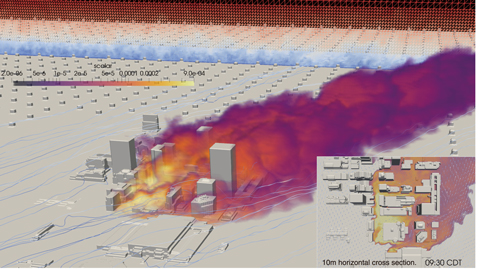
Fig.9-1 GPU-accelerated simulation of the wind-induced dispersion of radioactive material
Nuclear research and development often necessitates the treatment of radioactive materials, which requires high costs and efforts. For effective and efficient research, combining traditional experiments with computational modeling is becoming more and more important. For example, in the analysis of severe accidents in nuclear reactors, melting and mixing behavior of nuclear fuel, various structural components, and the spread of radioactive material released into the environment must be modelled. In the design process of next-generation reactors, the safety and integrity of structural materials and nuclear fuels in unconventional environments must be assessed. Simulations prior to experimentation can help predict necessary experimental settings to yield safer and more effective results for the problems under consideration.
Computational analysis using supercomputers plays a crucial role in employing this strategy. Owing to the limitations of computational capacity, analytical models have often been simplified to carry out simulations in a reasonable amount of time. Using state-of-the art technologies such as GPU and AI-based calculations will allow realistic simulations of complex models to be carried out with few or no simplifications. These simulations will provide detailed information not yet accessible by experiments and shed new light on the problem under consideration.
As such, Center for Computational Science & e-Systems (CCSE) is developing simulation frameworks to analyze complex phenomena comprised of various interacting model components to investigate severe accidents and material design for new reactors. These developing fundamental technologies of accelerated large-scale computations will be necessary for the next-generation exa-scale supercomputers (Fig.9-1). These simulation frameworks for complex phenomena will serve as a common fundamental technology for nuclear R&D and for scientific research on the whole.
Research activities in computational science in FY2018 are summarized as follows. For the reconstruction and revitalization of the Fukushima Prefecture, experimental measurements of hardness of various model fuel debris were reproduced and analyzed from the viewpoint of atomistic structures. These results contributed to the planned decommission of the TEPCO’s Fukushima Daiichi NPS (Chapter 1, Topic 1-2). Software for the precise estimation of radiation exposure in residential area was also developed that can take the details of terrain and trees in the area into account and calculate a detailed distribution of air dose rate (Chapter 1, Topic 1-17). Specific computational technologies that have been under development for future exa-scale calculations include a GPU-accelerated algorithm for simulating the wind-induced dispersion of radioactive material (Topic 9-1) and parallel calculation techniques for fast and large-scale fluid dynamics simulations to analyze severe accidents (Topic 9-2). Specific advanced techniques of multi-physics, multi-scale simulation frameworks for the analysis of complicated phenomena discussed here include an analysis of laser-beam machining by sector of fast reactor and advanced reactor research and development (Topic 9-3), the effect of ambient hydrogen on the mechanical properties of materials (Topic 9-4), and the application of AI-related technologies to the simulation of the quantum many-body effect in strongly-correlated electron systems such as heavy-element compounds (Topic 9-5).
Furthermore, research on simulation and computational techniques have been promoted to form a common foundation for nuclear research and development and are being provided to the nuclear R&D and scientific research communities.